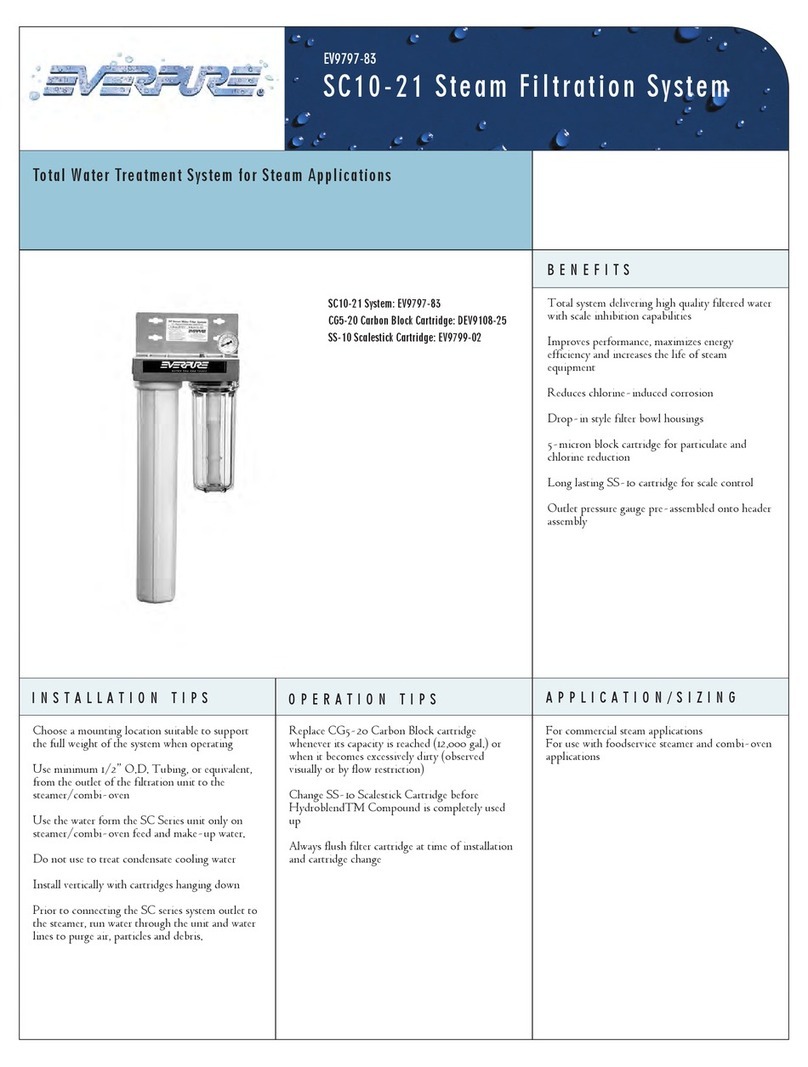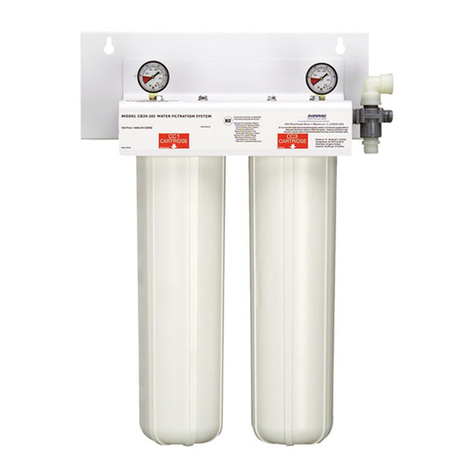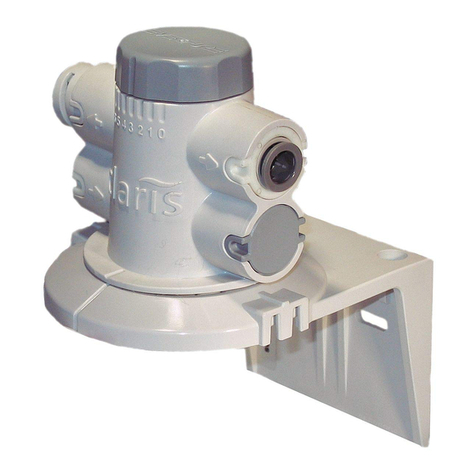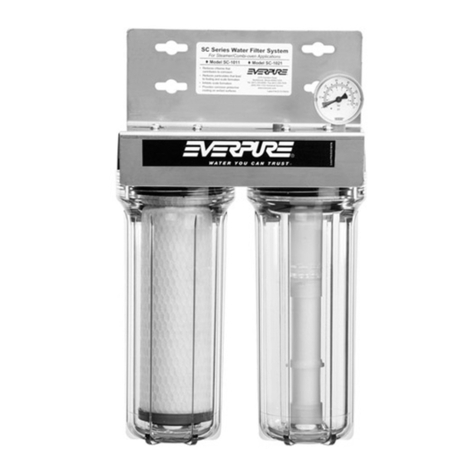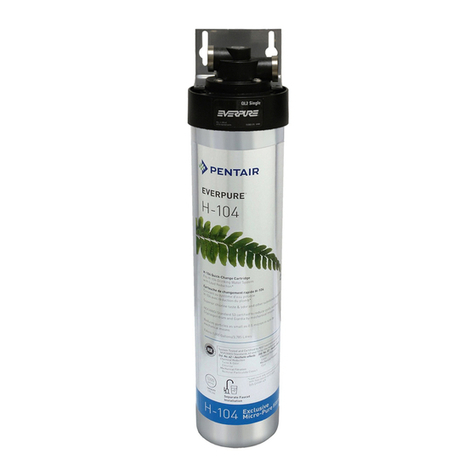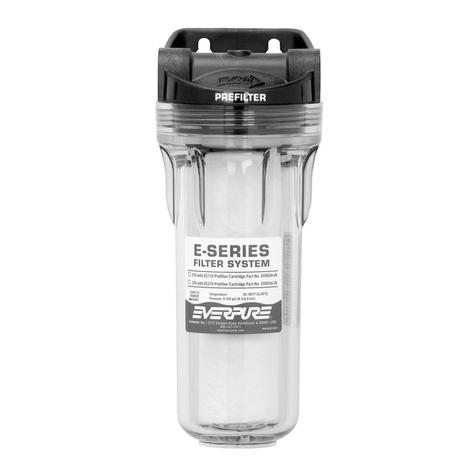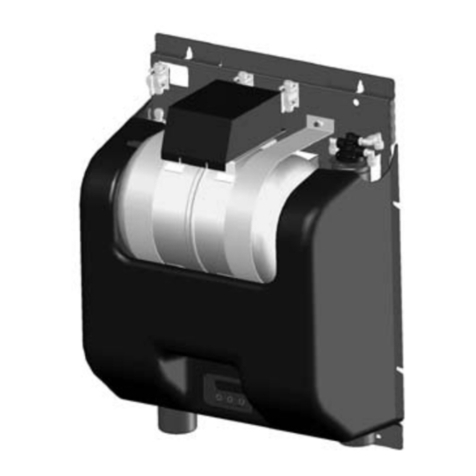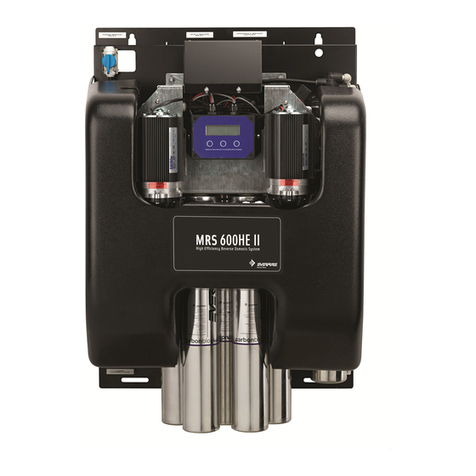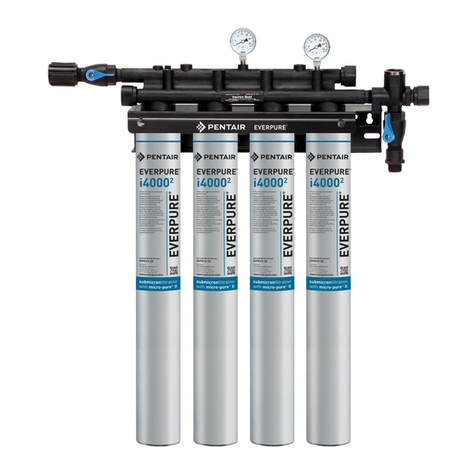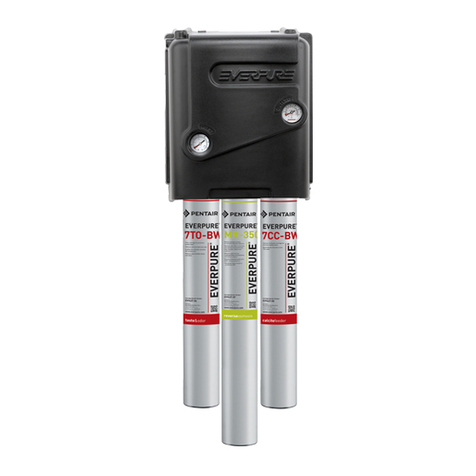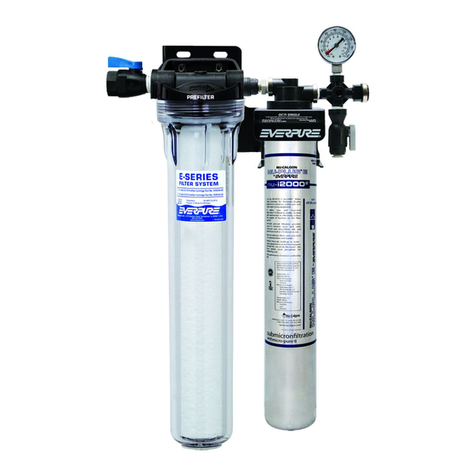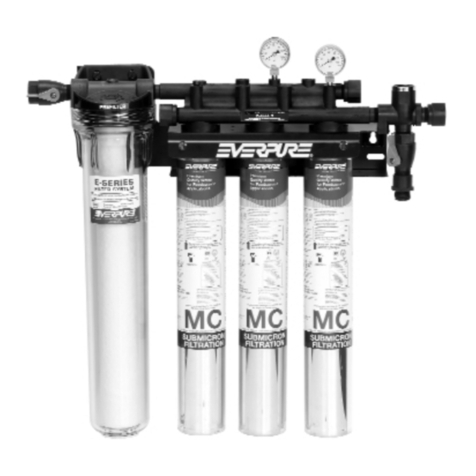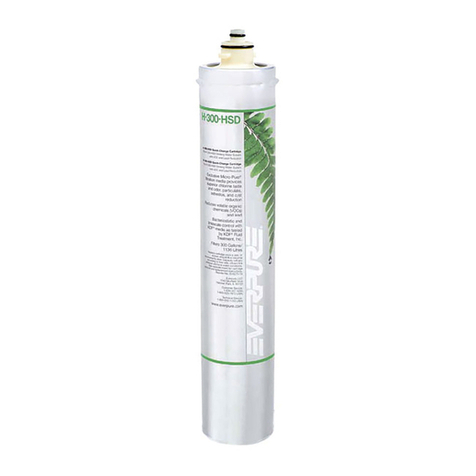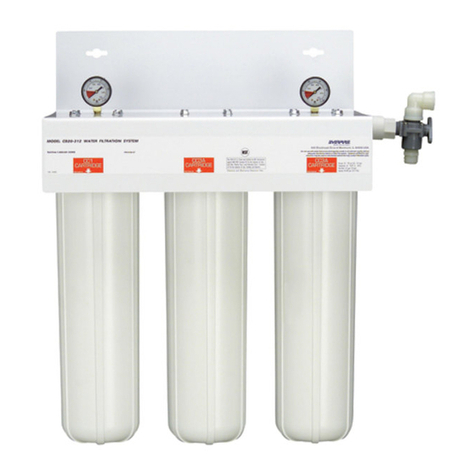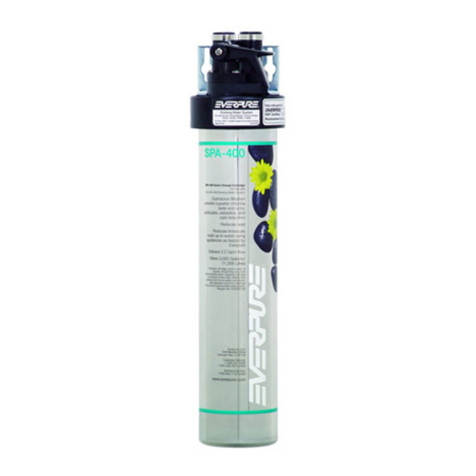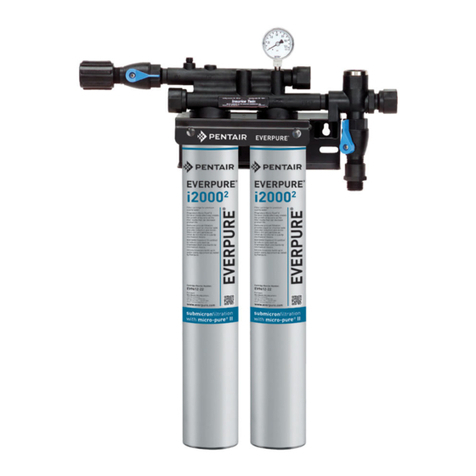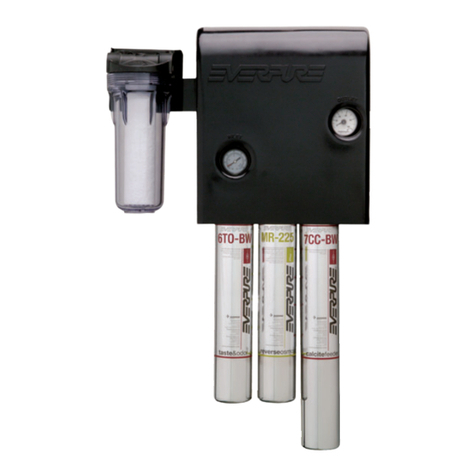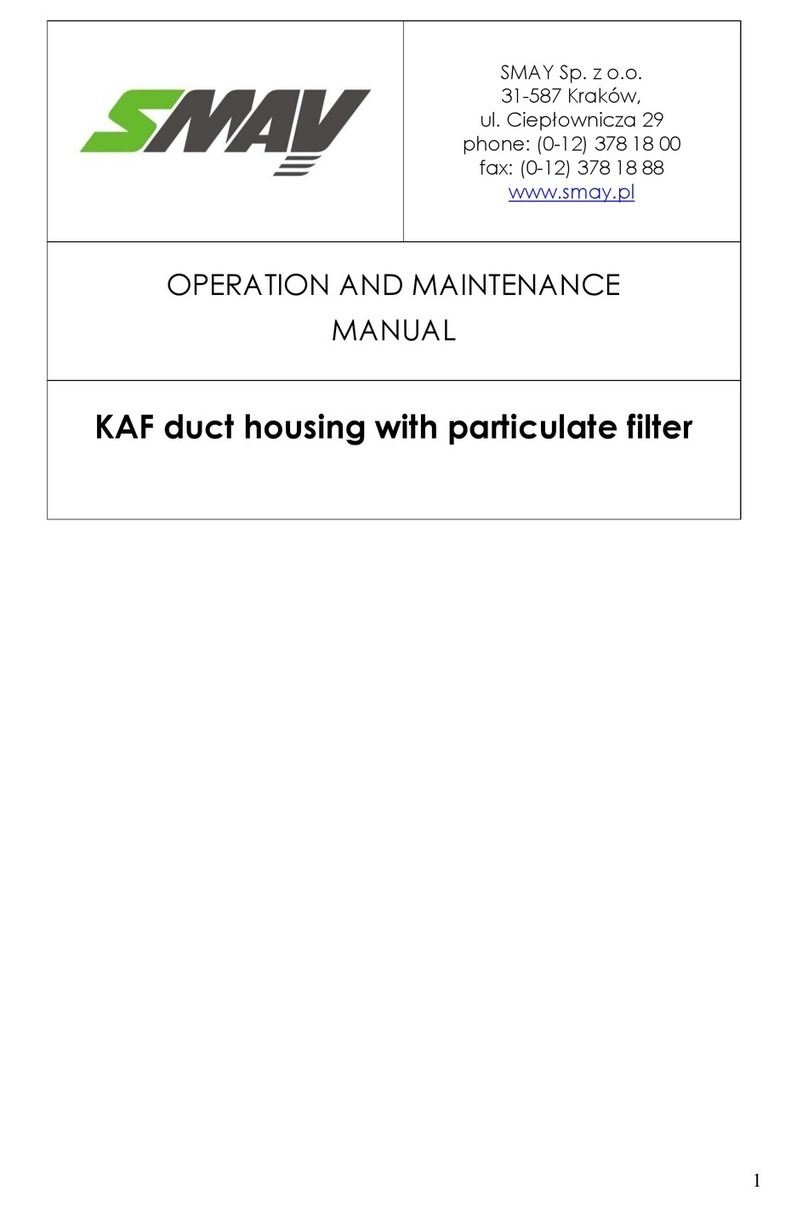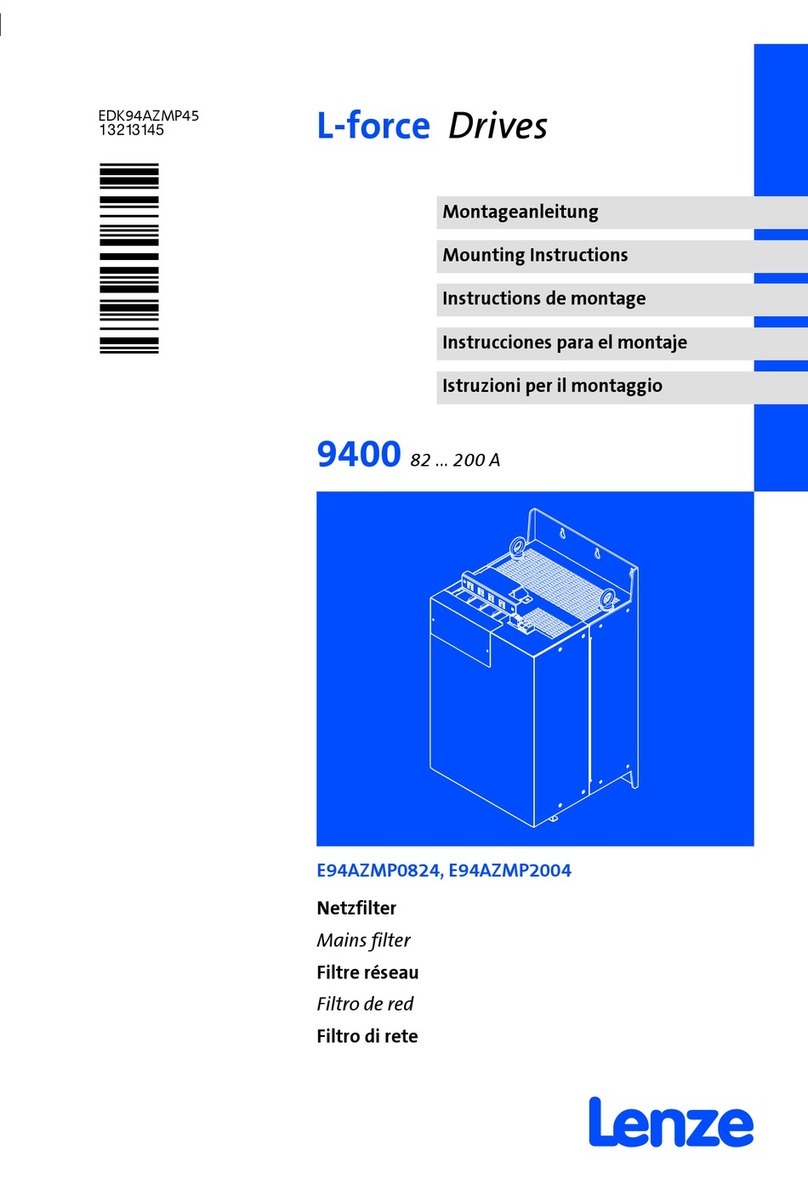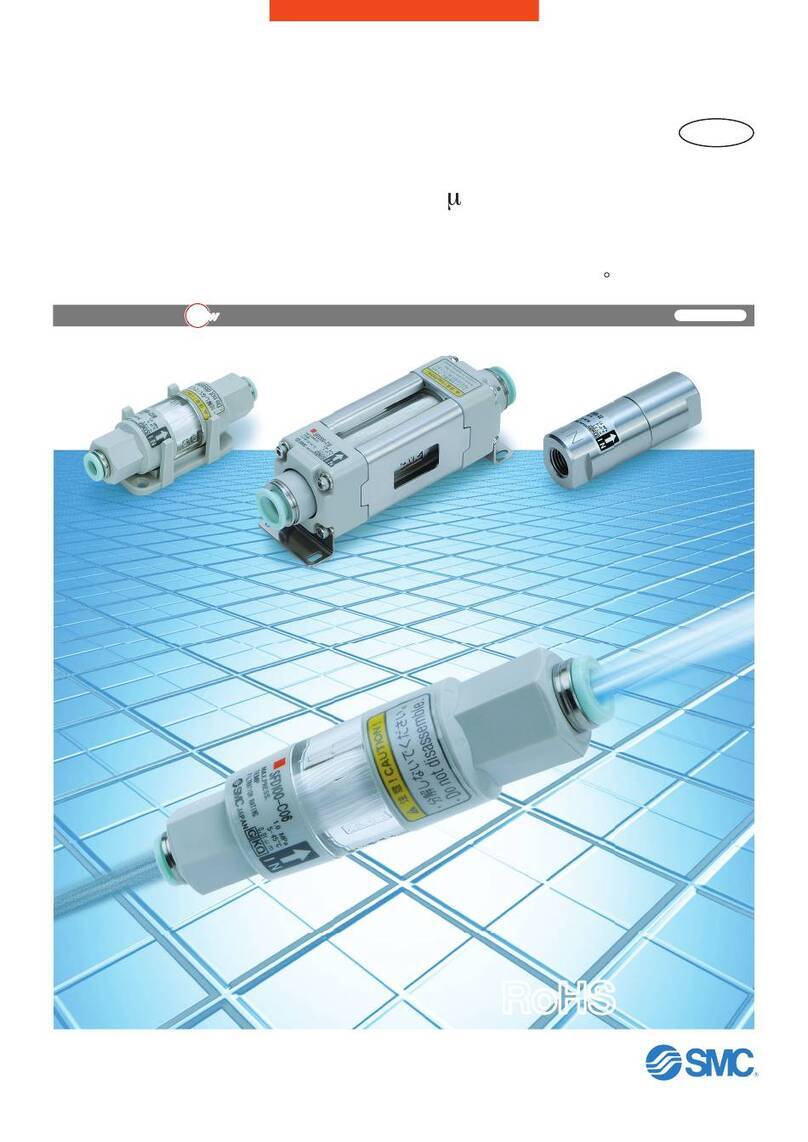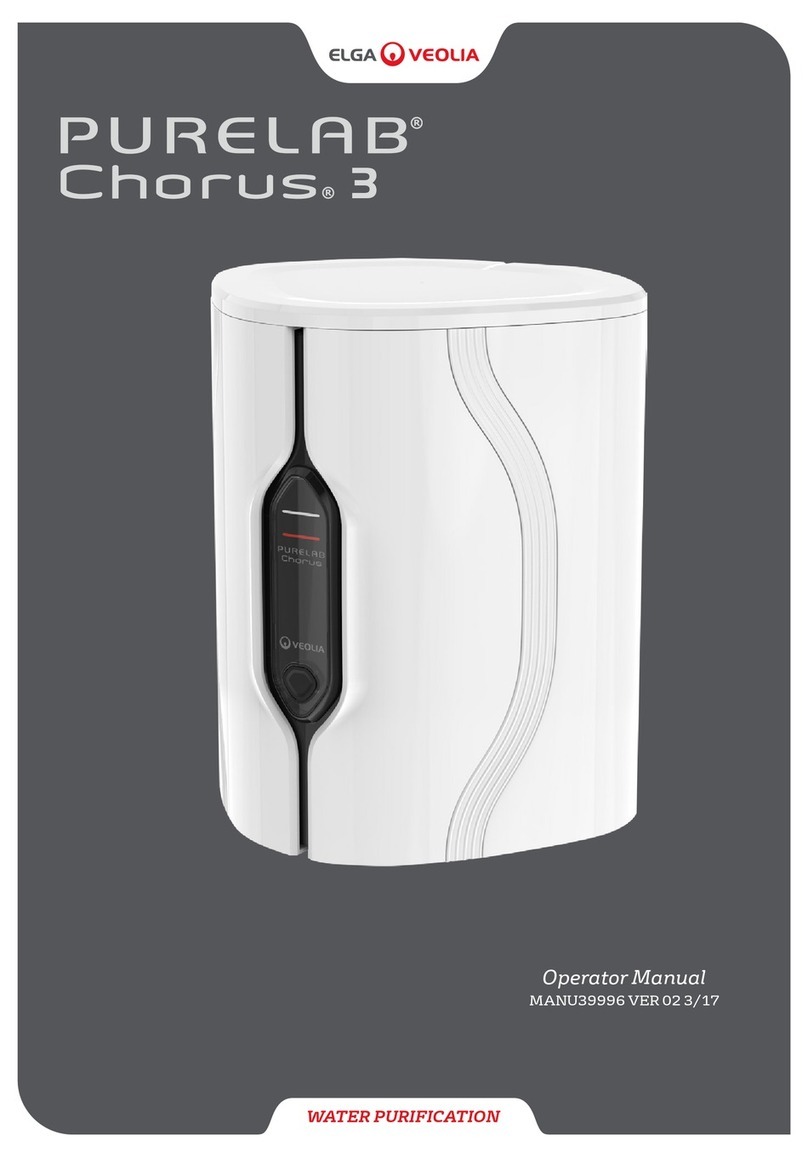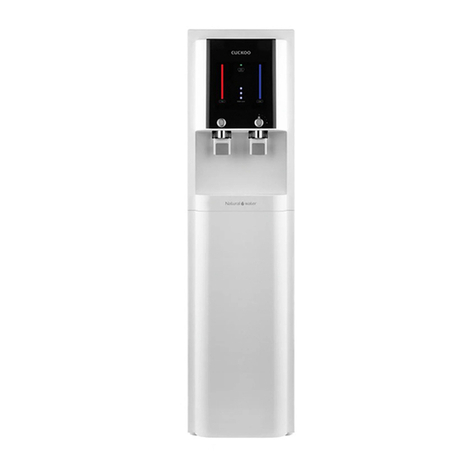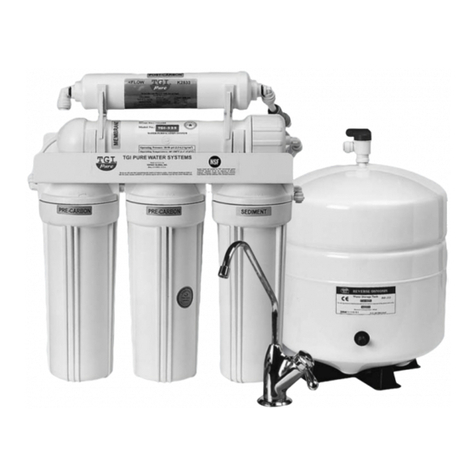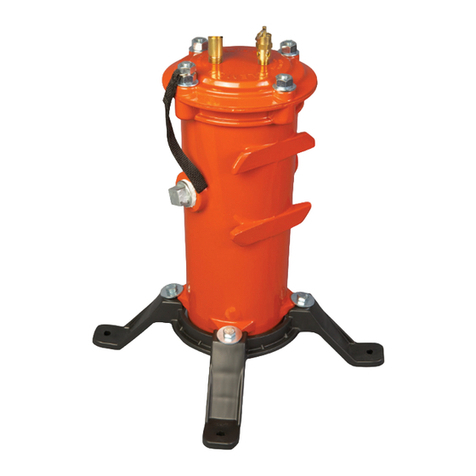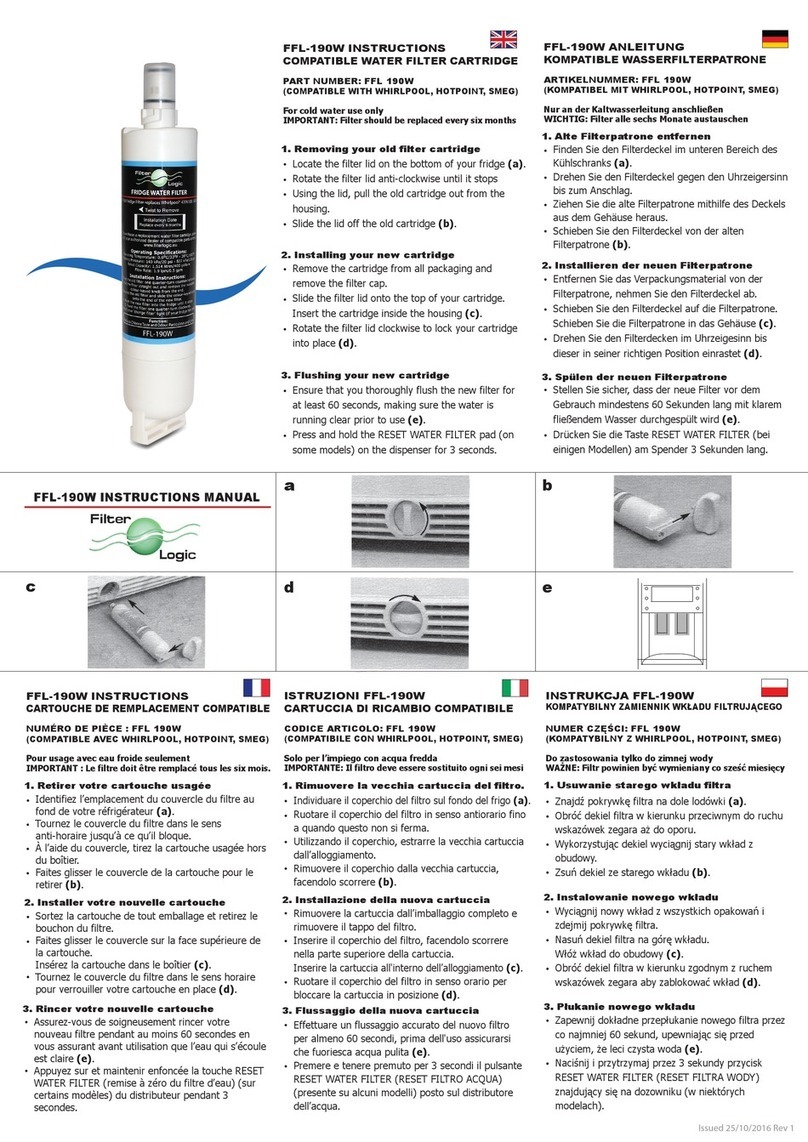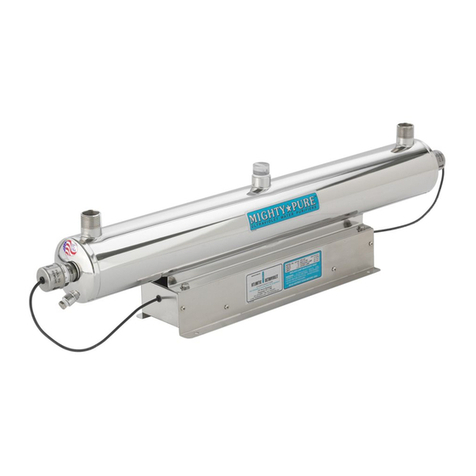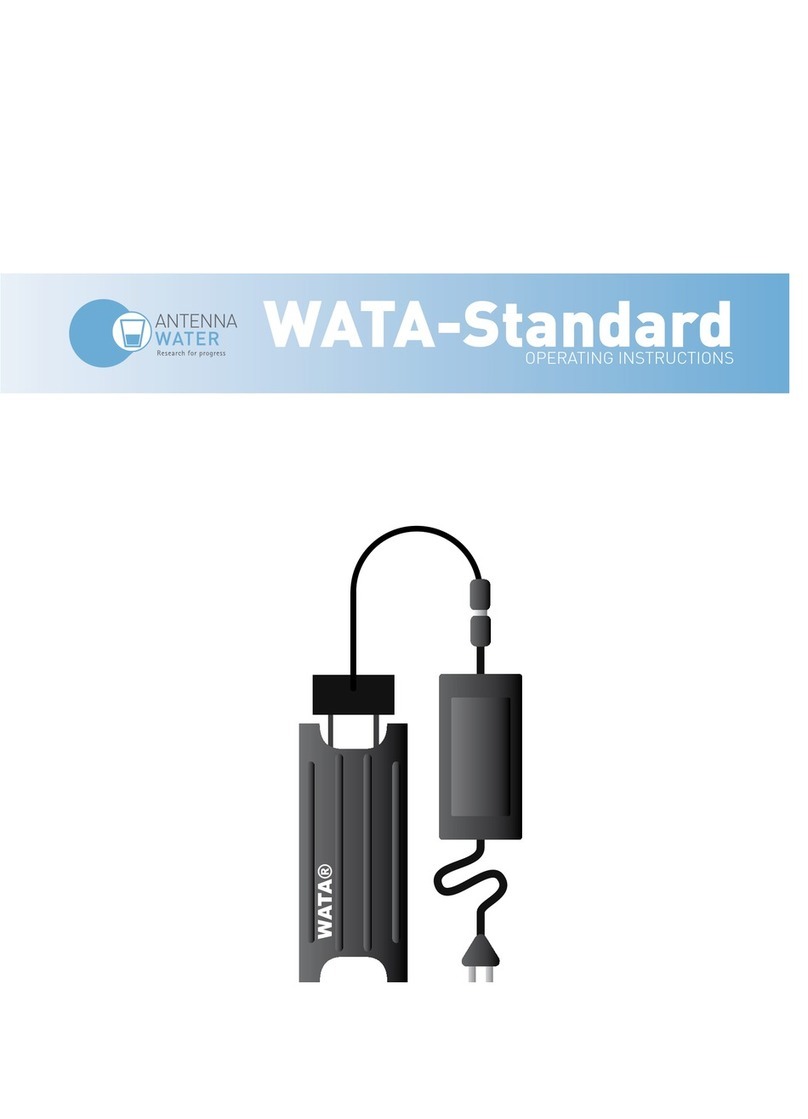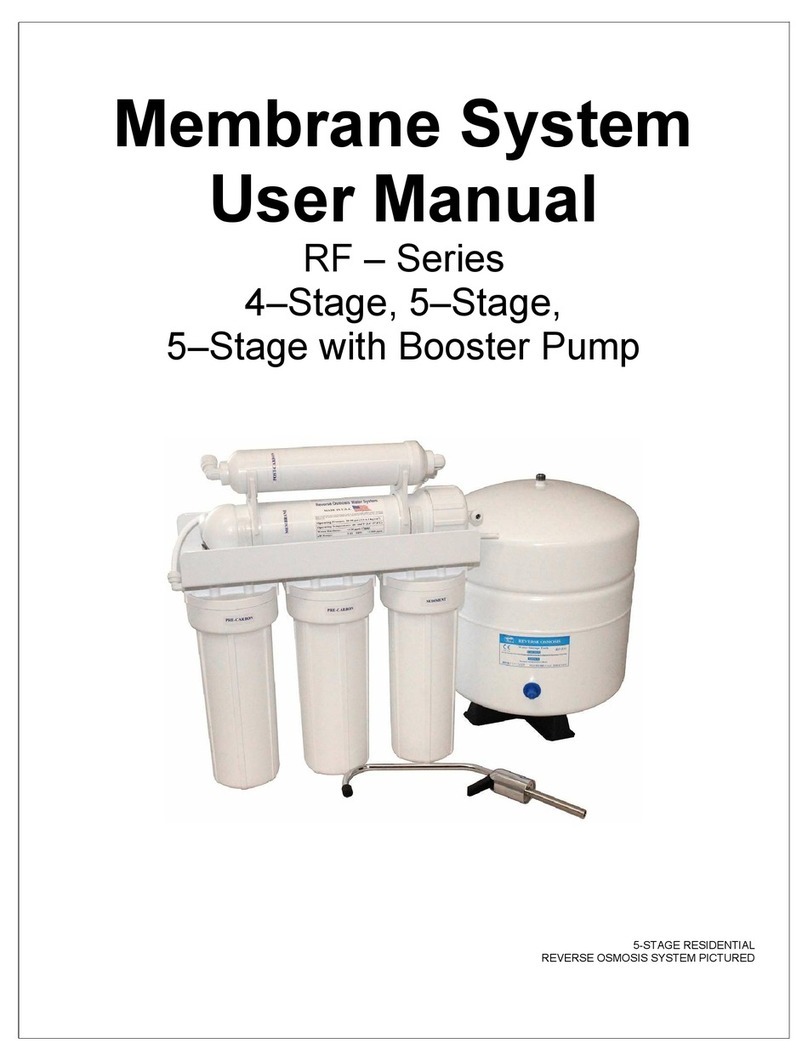
*Not Performance Tested or Certified by NSF
5. Hold (do not attach) mounting bracket onto head and position head
at wall location that will provide most convenient installation. Orient
elbow fitting as required. Plan carefully before cutting tubing. Cut
tubing so that ends are “square.” If tubing ends cannot be joined
directly to installed head fittings, a coupling and 3 feet of plastic
tubing are provided.
6. Using mounting bracket as a template, mark location and drill, or
start, holes for mounting head to wall. Install mounting bracket onto
head in appropriate position.
7. Remove straight and elbow fittings. Apply Teflon tape to threads that
install into head and reinstall fittings tightly. Final orientation of elbow
fitting should be achieved while it is being tightened. Do not back
off fittings into final position.
8. Slide compression nut onto cold water faucet tubing with threads
facing cut end. Slide clamping ring (taper facing cut end) onto tubing
and then slide cone (taper facing cut end) onto tubing. Wet tubing
end for lubrication and then insert tubing fully into straight fitting.
Slide down cone and clamping right and secure in position by fully
tightening compression nut. Repeat this procedure securing water
supply line to elbow fitting. If water supply line is too short to be
directly connected, cut supplied tubing to proper length and use
supplied coupling, compression nuts, clamping rings and cones to
make final connection. (Figure 3)
9. Tighten all connections to insure leakproof installation. Double
check that incoming water supply line is connected to head inlet.
If in doubt, check flow direction arrow, molded into top of head.
10. Insert filter cartridge following instructions on the cartridge
label. Refill water tank with superchlorinated water (follow
superchlorination instructions provided in the following
paragraphs) and run water from cold water faucet checking
all new connections for leaks. (Figure 2)
USE OF SUPERCHLORINATION FOR MAXIMUM PROTECTION
Chlorine is the world’s most accepted and widely used disinfectant.
A chlorine excess, called a residual, is recognized as an indication of
water safety.
Superchlorination is a disinfection method which provides a chlorine
residual of 3.0 to 5.0 ppm.** It will make all the water (from every
outlet) in your RV microbiologically safe. Although the chlorine will
impart a somewhat offensive taste and odor, this will be reduced
from your cooking and drinking water by the Everpure water filter.
The Everpure Water Treatment System provides all that is needed
except chlorine, which must be purchased fresh locally. Simply
proceed with the following instructions:
TO SUPERCHLORINATE YOUR WATER
Superchlorinate with household laundry bleach (sodium hypochlorite).
You may not have thought of this familiar product (Clorox®, Purex®,
Sun-Brite®, etc.) as a water disinfectant, but it is a common form of
sodium hypochlorite (chlorine). Fill the Everpure chlorine disinfectant
dispenser with fresh liquid bleach and add 1/6 ounce (5 ml) or 1
teaspoonful to each 10 gallons (38 l) of water held in your tank. This
doses the water with 6.7 ppm (parts per million) chlorine for killing
harmful bacteria and slime-forming organisms. The most effective
method for putting chlorine into the water system is to first connect
your hose to your vehicle and then put the bleach into the other end of
the hose just before connecting it to the park faucet or other hydrant.
Use chlorine every time you connect to a water source to keep the
hose sanitary and to protect your water system from becoming
contaminated via the water source.*
The chlorine color test (described in the following section) tells you
whether or not you have added enough chlorine to your water to
provide a safety-indicating excess.
YOU MUST TEST FOR SAFETY-INDICATING CHLORINE
RESIDUAL
A residual of 3.0 to 5.0 ppm chlorine,** after as little as 7 minutes
standing time, insures that your water is microbiologically safe – and
chlorine water disinfection lets you test for safety with a quick, simple
feature.
The Everpure RV Water Treatment System provides easy to use test
strips for determining the chlorine residual in your system’s water.
Take one strip and place under running water from any cold water
outlet not served by your Everpure water filter. Leave the strip in the
stream for approximately 10 seconds. Remove strip and compare the
color of the free chlorine square with the color blocks on the side of
the bottle labeled free chlorine. For maximum results your water color
should be deeper than the 4 ppm color block. If it is not, add more
chlorine to the water.
If you are not able to get a minimum 3.0 ppm residual reading by adding
small amounts of chlorine to your water, most likely your water system
is very badly contaminated. This can be remedied by dosing the system
with a higher concentration of chlorine.
(IMPORTANT NOTE: RV manufacturers suggest sanitizing the water
systems in new recreational vehicles. The following procedure may
also be used for this purpose.)
Add 6 oz. (0.2 liter or 2/3 cup) of a 5¼% liquid household bleach to
each 10 gallons (38 liters) of water held in your tank. To make sure of
a thorough mixing, fill half of the tank, add bleach, then finish filling.
Now open each faucet not serviced by the Everpure water filter until
the water coming from it smells of chlorine; then shut it off. In this
way, you draw chlorinated water from all parts of the system. Don’t
forget the hot water faucets. Repeat this at one hour intervals until the
chlorine smell is immediately noticeable when you open a faucet. Now
drain the water system and follow the directions under the heading “To
superchlorinate your water”.
** The NSF claim for Chlorine reduction is based on a 2.0 ppm influent
challenge.
Figure 3




